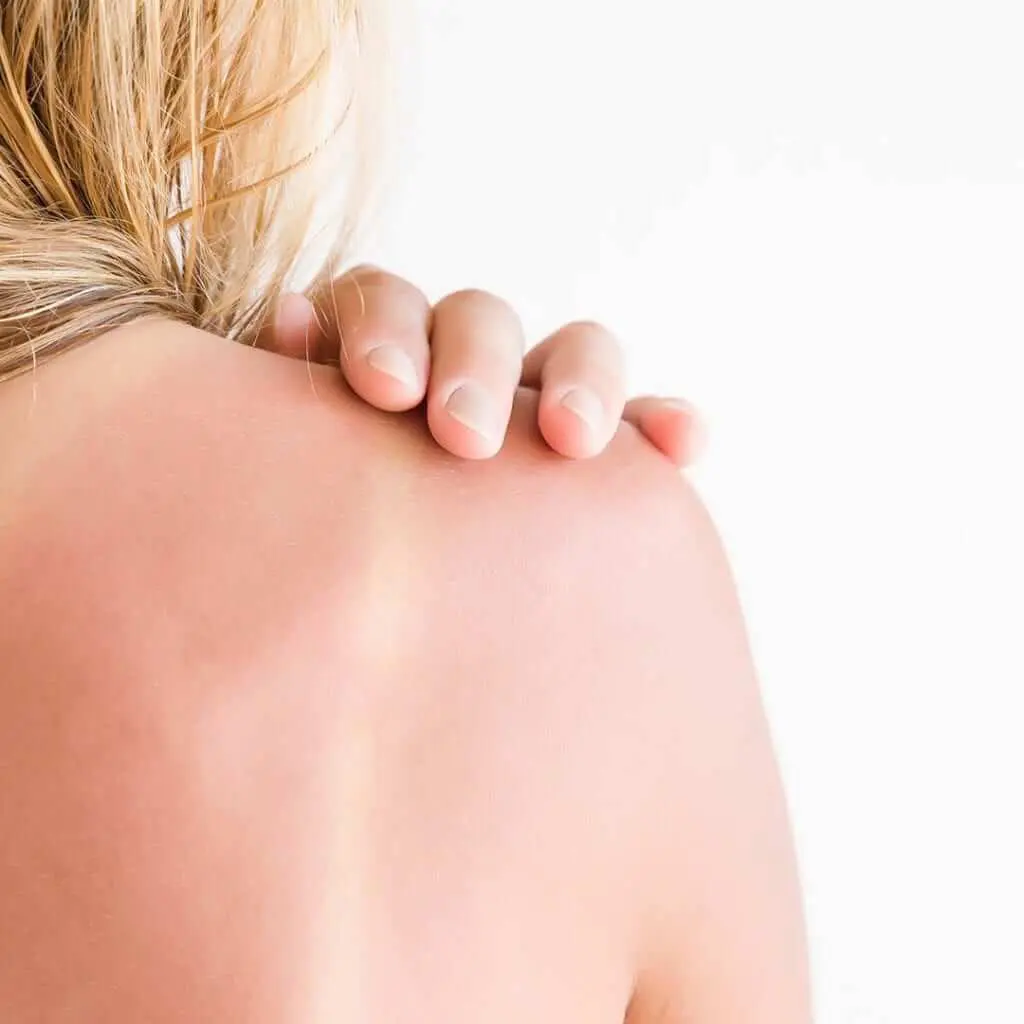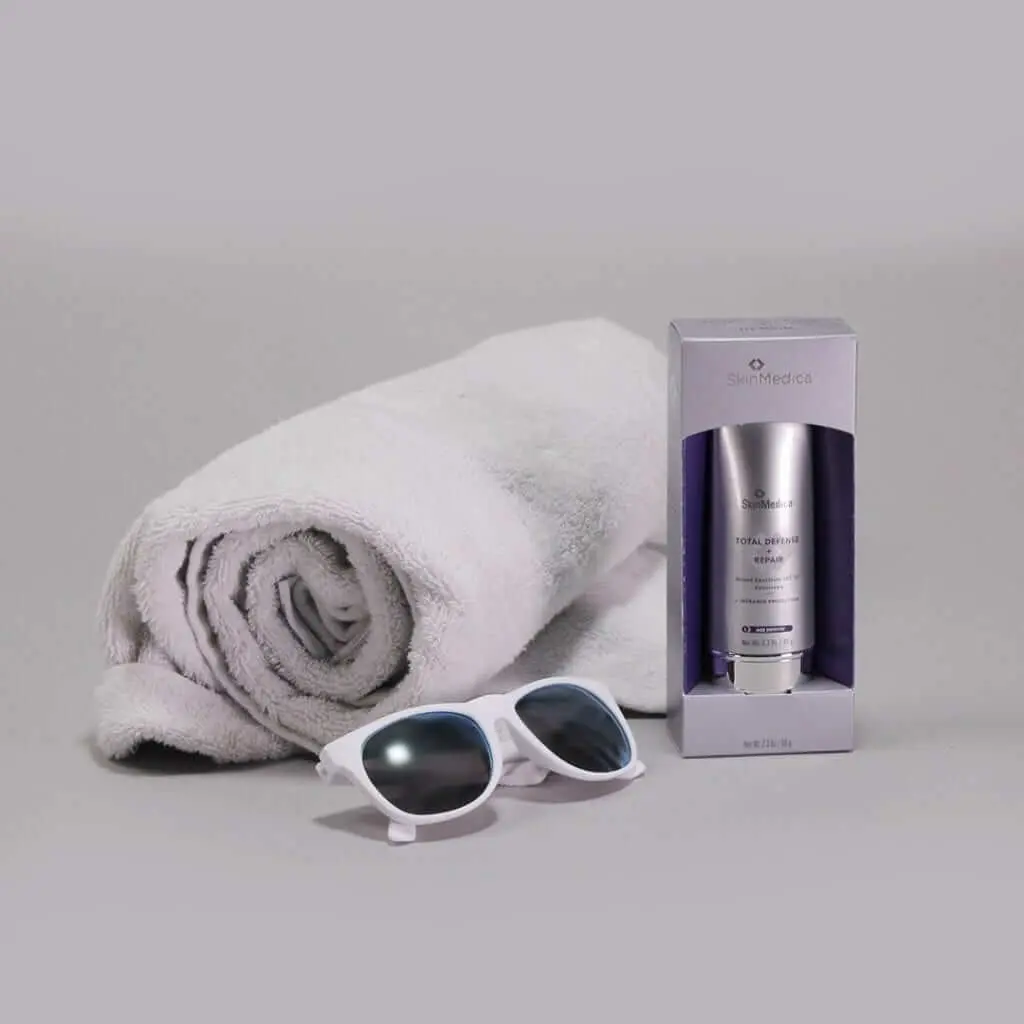All winter long you’ve been waiting for summer to show its warm, sunny self, but don’t let the “not a cloud in the sky” forecast get you too excited. Summer can wreak havoc on your skin and it’s important to take the proper precautions.
A sunburn, clinically speaking, is sun damage from the sun’s ultraviolet (UV) rays. Sunburns make the skin red, hot to the touch, and painful.
While anyone can contract a good old fashioned sunburn, those with lighter skin complexions, lighter eyes, and more freckles are more prone to sun damage and burns. Trust me, it’s not because the sun is picky. Those who aren’t genetically dark-skinned can, with repeated exposure to UV rays, have destruction of their elastic fibers in the skin — in other words, repeated sun exposure causes the skin to sag and wrinkle, and damages blood vessels. Geez, what else?!

Superficial Burn

Yes, we’re talking about actual burns from the sun. This first-degree burn shows up 4-6 hours after some fun-in-the-sun, making the outermost layer of skin red and painful to the touch. This uncomfortable burn is the most common type of sunburn, and it’s easy to get.
Being in the sun for a few hours without sunscreen is the best way to score a sunburn — duh. But, what if you have sunscreen on? Sunscreen protects your skin when you remember to apply it every 1-2 hours. If you don’t, you could be looking at a pretty fierce sunburn on the areas exposed to the sun’s UV rays. Some underestimate how long they will be in the sun and don’t think to lather up with their household sunscreen until they’re already red and hurting, and it’s too late.
The first-degree burn can last up to three days but can be soothed with a few pumps of aloe vera and minimal sun exposure until the burn is healed.
Partial Thickness
This one goes a bit further than teaching our skin a lesson for not wearing sunscreen. The damage from a second-degree burn goes deeper than that first, outermost layer of skin — we’re talking sun damage on multiple layers of skin and damaged nerve endings. Plus, this burn is going to cause the outermost layer of skin to be red, blister, peel, and sore to the touch.
Since the damage extends to multiple layers of the skin, there is a bigger risk for infection from blisters. These blisters aren’t harmful unless they pop before they are ready, which will leave brand new, raw skin exposed to debris in the air. It’s important to not pick at the blisters or any peeling you may have at the sunburn site, considering this leaves room for hyperpigmentation — rare, but can happen if the skin is peeled.
While second-degree sunburns are no fun, you can take care of them from the comfort of your own home! Lather up in Aloe Vera, stay hydrated, keep Ibuprofen and Tylenol by your bed to help with swelling and discomfort, cool compresses, and remember to stay out of the sun.
Full thickness
There’s no such thing as a good sunburn — but there’s definitely a bad one. Third-degree burn happens when the sunscreen step was completely skipped before the pool day and the sun just glued itself to you. This burn will leave a purplish color to the exposed skin while forming blisters that are accompanied by chills, a mild fever, a headache, and even dehydration.
Discolored skin, blisters, fevers, oh my! If this happens to you, don’t worry – you can still help it just by using things at home. Again, aloe vera will be your best friend during this time. You can also try reapplying sunscreen every two hours, and making sure you have waterproof sunscreen on you. Wearing hats and cover ups are always a great alternative, and plopping down under an umbrella with the scorching sun could make all the difference!
If anything in the skin changes with this type of sunburn, be sure to see your doctor.

Prevention
We understand that avoiding the sun at all costs isn’t on anyone’s agenda — and it doesn’t have to be! You can still have some fun in the sun and protect your skin from any further sun damage with a little SPF. Whether it’s a mist or lotion, that doesn’t matter — pick your poison and run with it, just be sure you are applying it anywhere the sun can attack.
If you just so happen to get burned — on accident, of course — expect to see a rash within six hours of sun exposure. Depending on the severity of the burn, it can last a minimum of three days. When treating at home, be sure you are not using greasy lotions or Petroleum Jelly. These will lock in heat and make the skin feel hotter to the touch.
Remember, sun damage isn’t always visible. Under the surface, UV light can alter DNA, prematurely aging your skin. With time, DNA damage can contribute to skin cancers including but not limited to Melanoma. If you are to come into contact with a sunburn, be sure you are checking your skin for any new freckled friends! They might just need a check out for your doctor.





